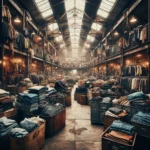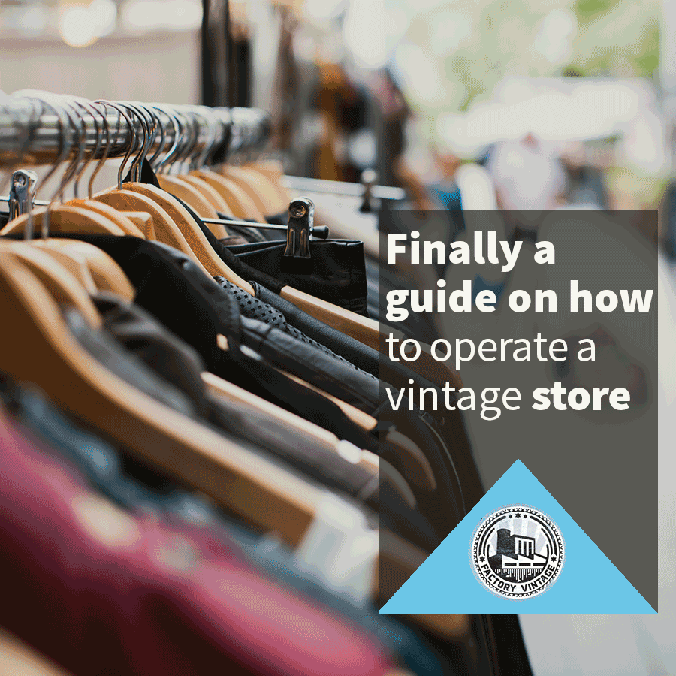
When it comes to collecting vintage clothing from the United States the Japanese buyers have been paving the path for nearly 30 years. Since the eighties Japanese vintage collectors have been traveling across the United States hitting up thrift stores, vintage stores, clothing flea markets and just about anywhere they could find old vintage jeans, leather jackets, sneakers or t-shirts.
As the vintage clothing culture became more popular in Japan and the demand grew collectors began to find new ways to locate more product. Because each vintage piece is essentially a one-off it is difficult to determine the actual size and fit without trying it on. One problem the collectors had was finding vintage pieces that were not only the correct size but the way the garment fit had to be perfect as well. To overcome this obstacle they hired hip Japanese boys and girls that were the perfect body shape to match the sizes that they were looking for.
If you were young Japanese boy or girl size 30L 30W, 29L 30W or 32L 30W, you just might land a gig all expense paid buy trip to the US. You could get a budget up to 10 thousand dollars to spend on product and expenses.
Scores of young hip Japanese kids traveled across the United States in rental vans finding jeans, sneakers, t-shirts and jackets that were in there size and fit. They would show up to flea markets before they opened, often renting a stall for the sole purpose of shopping what the other vendors had before the public arrived.
If you were selling vintage clothing in the 90’s you were mainly into the business to source vintage Levis for some of these young Japanese buyers. The vintage culture in Japan was in full motion and the young Japanese fashionistas were obsessed with vintage American culture. Everything from American rockabilly, vintage surf, motocross, punk, 70’s skateboarding, 80’s sneakers was being snatched up whenever they could get there hands on it.

Meanwhile in the United States there was hardly a demand for vintage clothing except among theater students and fashion designers. It wasn’t until the young Japanese buyers came to the US looking for their select pieces that the vintage market in the US began to take root. The vintage clothing store became an outlet for these buyers to source more clothing in a select space. Instead of going through a never ending amount of racks at a thrift store looking for one or two good pieces, the buyers could now hit up a vintage clothing store and spend a couple of thousand dollars on a few hundred pieces in one stop.
Some shop owners got rid of the brick and mortar all together and just focused on setting up a warehouse or storage unit to show buyers their collection when they came to town. Flea Markets or swap meets dedicated to antique goods, esp. clothing started to become meeting places for American collectors and Japanese Buyers. Japanese buyers would scour their collections with flashlights on their heads before the collector had time to take it out of their trailer or trunk.
Soon old American clothing, used clothing, the stuff Rag houses labeled trecera or trash, was beginning to create a demand and industry of its very own.
Select old Levis were selling for over 1 thousand a pair retail in vintage shops in Tokyo, the average pairs of Levis were selling for up to 2 hundred a piece. It was a good market to be in and everyone seemed to be happy from the vintage collector in the US, the young Japanese buyer, to the collector and shop owner in Japan. The main force guiding the new market and helping it evolve was the Japanese shop owners who were funding it.
It seemed to be a lucrative market for everyone that was involved until one day the bottom fell out. One morning in late April a ship pulled into a port in Japan carrying a container with items that had never hit the Japanese seaboard in this much quantity before. The container was full of vintage Levis size 28-32 all folded and ready to hit the retail market.
Instantly the Japanese market was flooded and overnight the wholesale price of Levis dropped from $35 a pair to $6 a pair, often less than the collector had invested into them. Some collectors had hundreds of thousands of dollars invested into Levis that they were saving for their Japanese buyers. Each collector took a hit and needed to find a way to replenish their losses. The demand didn’t end, but it changed, and as the dust began to settle from the fall out a new customer began to take notice of cool old things, and they would soon be a force to be reckoned with.
The time was the mid nineties, DJ’s were getting big, raves were in full swing and American fashion and culture had taken a turn towards more urban, loose fitting garments. If you didn’t go with the flow you were labeled alternative or independent (indy), and soon a huge alternative market began to take form.

Young kids and college student across the Untied States began listening to their alternative music, watching their alternative films and wearing their alternative clothes that just happen to be what the Japanese kids were into five years earlier. Bands like Nirvana and Tripping Daisey, made vintage clothing cool and alternative while films like Pulp Fiction and American Graffiti made it hardcore and independent. American collectors started putting their collections in vintage clothing stores where the new alternative American kids could find outfits to match their attitude.

One of the Japanese collectors that was there as the industry grew and changed is Rin Takan.
For the past 15 years Rin has put out a number of books in his My Freedamn series photographing collections and select pieces that helped turn the industry into what it is today.
Rin uses the knowledge he has gained from his years of collecting to put out an informative, artistic and creative coffee table books packed with images and story’s of why each style was unique and cool in it’s own way.
The My Freedamn series of books are not only great to look at but they are also a educational tool for anyone interested in vintage clothing and the vintage culture.
Rin Takan’s latest release Schott NYC 100 Years of An American Original features an amazing collection of leather jackets and outerwear put out by clothing manufacture Schott NYC.
To find out more about Rin Takan and My Freedamn check out http://myfreedamn.com








Leave a Reply